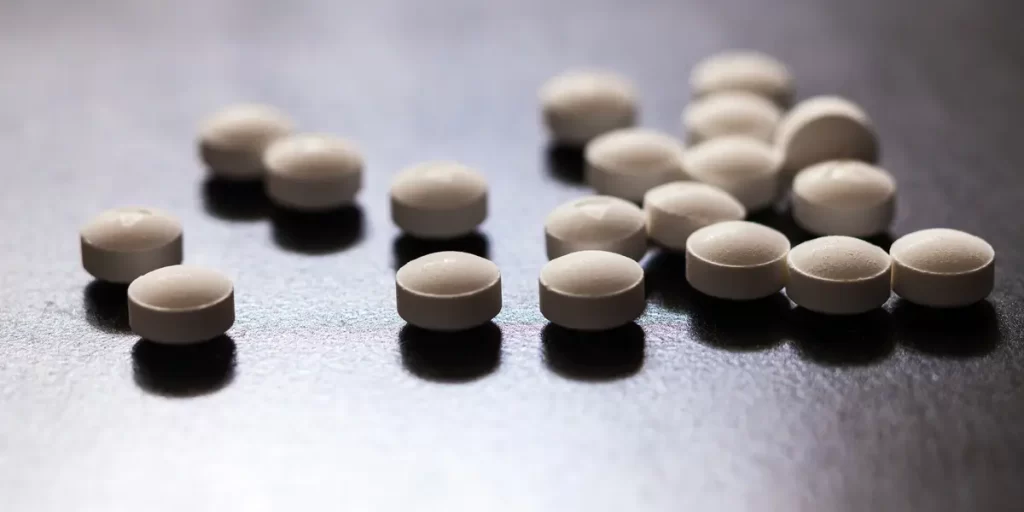
Tapering means slowly reducing the dose of a drug over time. The main reason for using an opioid taper is to prevent uncomfortable and sometimes life-threatening opioid withdrawal symptoms. Ideally, a medical expert will help a person gradually reduce the amount of an opioid they consume, thus limiting the severity of withdrawal symptoms.
Some withdrawal effects of opioids may include:
- Abdominal cramping
- Agitation
- Anxiety
- Diarrhea
- Dilated pupils
- Goosebumps
- Watery eyes
- Muscle aches
- Nausea or vomiting
- Runny nose
- Sweating
- Trouble sleeping
- Yawning
Tapering helps reduce the chance that these symptoms, among others, occur all at once or in the most extreme severity. Tapering allows a person to concentrate on working towards long-term sobriety without being overwhelmed by withdrawal symptoms.
How To Taper Off Opioids
Before considering tapering off opioids, a person should always speak with their doctor first. Even if the opioid is an illicit one like heroin, a physician can make the detox process safer.

It's time to get your life back.
If you are struggling with addiction and co-occurring mental health, our expert team is here to guide you every step of the way. Don’t wait— reach out today to take the first step toward taking control of your life.
If someone does not have a physician, drug rehab programs specialize in providing medical detox and addiction treatment services.
No one should ever taper off opioids by themselves as it can be dangerous and the symptoms that develop are unpredictable. Opioid withdrawal comes with side effects that must be managed appropriately. Additionally, opioids are only available by prescription, making it nearly impossible to manage one’s own tapering schedule. Additionally, trying to taper off illegal opioids is dangerous and can cause life-threatening side effects.
Tapering opioids can be useful for the following situations:
- For lowering the daily dose for a patient taking chronic pain medication
- For lowering the daily dose for someone on medication-assisted therapy (MAT) for opioid addiction
- For weaning someone off who is showing symptoms of a substance use disorder (problems with work, relationships, or difficulty controlling usage)
- For weaning someone off illicit opioids like heroin
Slow Tapering
Studies show that slow-tapering schedules are more effective at preventing setbacks (i.e., a return to drug use) than fast-tapering schedules. For someone in a medical detox program, slow tapers are usually four weeks or more. In some cases, the detox program will taper a person down to a steady daily dose and they will remain on that dose indefinitely.
People on chronic pain medication may have much longer taper schedules that go several months, depending on the needs of the patient and their required dose to manage pain.
Fast Tapering
Fast tapering is less ideal but may be necessary for a few situations. For example, a woman who becomes pregnant may need to taper off opioids as quickly as possible or taper to a lower and safer dose.
Any taper schedule that’s less than three to four weeks is generally considered as being fast.
Substitution Taper
With a substitution taper, a person addicted to an illicit opioid, like heroin, is converted to a prescription opioid instead. Physicians cannot safely (or legally) use heroin to taper a person off heroin, so they must convert the person to a legal substance.
The most common opioids used in a substitution taper are the same used in MAT: methadone and Suboxone. The advantage of using these drugs over other prescription opioids is that if a person cannot wean off opioids completely, they can continue MAT treatment indefinitely.
Opioid Taper Schedule
Opioid taper guidelines recommend that each taper plan be individualized and unique to the person.
For people that have taken opioids for more than one year, the dose should be lowered by about 10% each month. So for example, someone taking morphine 100 mg daily in January may be tapered down to 90 mg daily in February.
People who have been on opioids for less than one year can have their dose decreased more quickly, at about the rate of 10% per week.
The person tapering and their doctor will have to determine what the goal of tapering is — should opioids be stopped completely or should the dose be decreased to reduce side effects? Is the opioid for treating pain or for treating opioid dependence?
How to Find Help for Opioid Detox in Washington or Oregon
Washington or Oregon residents — or people eager to begin treatment in the scenic Pacific Northwest — can call The Recovery Village Ridgefield. Call to speak with a representative about how professional addiction treatment can address a substance use disorder alongside any co-occurring mental health disorders. You deserve a healthier future, call today.



